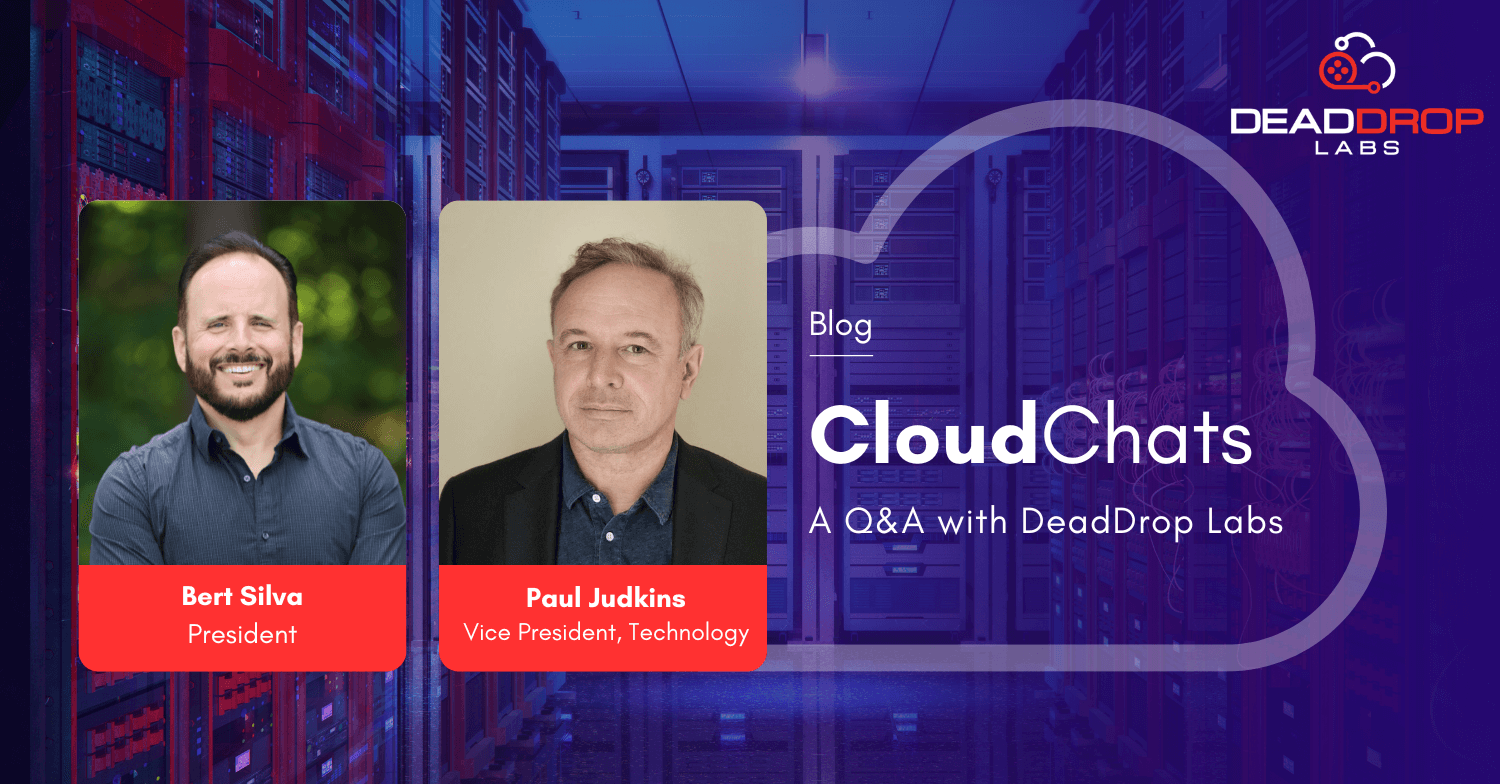A Q&A with Bert Silva, President and Paul Judkins, VP of Technology
In January 2021, the founders of DeadDrop Labs (DDL), an Integrated Media Technologies company based in Toronto, Canada, successfully transformed their initial idea into a thriving business venture. Among the original founders were Bert Silva, President, and Paul Judkins, VP of Technology, who identified a significant knowledge gap, especially within the visual effects (VFX) and animation industry. They recognized that creatives were actively seeking ways to leverage the cloud’s scalability and responsiveness in their creative workflows. DDL, leveraging its extensive experience in Media & Entertainment, along with its fully AWS-certified team, has and continues to play a crucial role in helping VFX and animation houses, including WeFX, Atomic Cartoons, Tribal Imaging, and many others, embrace their transition to the cloud.
We sat down with Bert and Paul to learn more about DeadDrop Labs and how their company’s cloud & M&E expertise coupled with IMT’s well established footprint in M&E makes the ultimate partnership.
How is DeadDrop Labs helping customers with their journey to the cloud?
DDL has leveraged its expertise and understanding of the unique requirements of the M&E sector, to help our clients seamlessly transition their workflows, content storage, pipeline, and high-performance compute requirements to the cloud. Through robust infrastructure and tailored solutions, we enable media and entertainment studios to optimize their operations, enhance collaboration, and scale their services efficiently. Whether it’s facilitating remote workstations, enabling high-speed burst rendering, or providing secure and reliable cloud storage, DDL plays a vital role in empowering customers to embrace the cloud and unlock the numerous benefits it offers to transform and elevate their business.
How is AWS transforming workflows for creatives? How is AWS the leader in cloud-based media solutions?
AWS is revolutionizing workflows in the media and entertainment industry by offering a comprehensive suite of cloud-based solutions tailored to the specific needs of their creative processes. With AWS, M&E companies, such as VFX and animation studios, can leverage scalable computing power and advanced rendering capabilities to accelerate their production pipelines. AWS’s high-performance computing resources allow artists to offload resource-intensive tasks, such as rendering complex visual effects and animations, to the cloud, significantly reducing rendering times and increasing productivity. Furthermore, AWS’s managed storage solutions ensure secure and efficient storage and retrieval of large-scale media assets, facilitating collaboration among distributed teams. The integration of AI and machine learning services enables automatic content tagging, accelerating the organization and searchability of assets. AWS’s cloud-based infrastructure empowers studios with the flexibility, scalability, and computational power necessary to drive innovation and deliver high-quality visuals more efficiently than ever before.
How does AWS cloud compare to on-prem options for creatives, and how can DDL help customers make that decision?
AWS cloud offers significant advantages over on-premises options for creatives. Firstly, AWS provides scalability and flexibility that on-premises infrastructure cannot match. With AWS, creatives can easily scale their resources up or down based on project requirements, eliminating the need for upfront hardware investments or the limitations of fixed infrastructure. This scalability ensures that creatives have the necessary computing power and storage capacity to handle demanding workloads, without worrying about capacity constraints.
Secondly, AWS provides global accessibility and collaboration capabilities that are vital for distributed creative teams. Creatives can access their work and collaborate seamlessly from anywhere, at any time, enabling remote work and facilitating collaboration among team members located in different regions. This flexibility is particularly crucial in today’s globalized and fast-paced media industry.
Thirdly, AWS’s advanced storage options and data management services offer enhanced security, durability, and reliability for creative assets. By leveraging AWS’s managed storage solutions, creatives can ensure the protection and availability of their media assets, reducing the risk of data loss or corruption. Additionally, AWS offers robust backup and disaster recovery options, providing an extra layer of data protection.
What are creatives biggest pain points when it comes to migrating workflows to the cloud?
The media and entertainment industry faces several significant pain points when migrating their workflows to the cloud. One of the key challenges is the concern over data security and protection of intellectual property. Creatives deal with valuable assets, including proprietary content and sensitive client information, and ensuring their security during cloud migration is of utmost importance. Another pain point is the potential disruption to existing workflows and the need for retraining or upskilling employees to adapt to new cloud-based tools and processes. Additionally, the large-scale transfer and storage of media files can be a challenge due to bandwidth limitations and the sheer volume of data involved. Maintaining consistent performance and minimizing latency issues when accessing and working with large media files can also be a pain point. Lastly, cost considerations and budget constraints play a role, as creatives need to carefully evaluate the financial implications of cloud migration, including subscription costs, data transfer fees, and ongoing operational expenses. Addressing these pain points requires careful planning, robust security measures, employee training, reliable infrastructure, and strategic budgeting to ensure a smooth and successful transition to the cloud.

